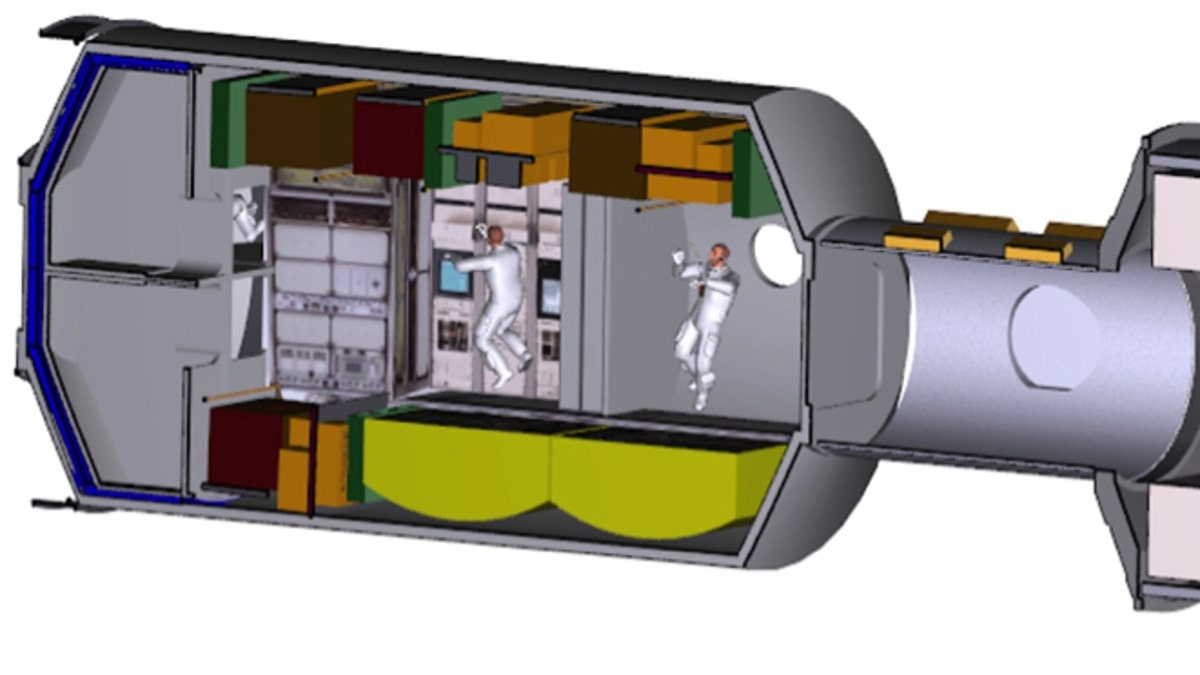
The ISS-derived Deep Space Habitat concept demonstrator evaluation will focus on the following elements, from left to right, Lab/Hab, tunnel, and Multi-Purpose Logistics Module. (NASA)
Though dust has hardly settled on NASA's triumphant budget increase doled out by members of Congress this month, the agency is already hard at work proving it deserves the extra funding. Its next order of business? Heed Congress' instruction to develop a sufficient prototype model of a deep space habitat by no later than 2018. For those glancing at the calendar, 2018 is just two short years away, meaning NASA has roughly 730 days to show off what could likely shape deep space travel for dozens of decades. No pressure.
As high as these stakes sound to non-rocket scientists, NASA likely took Congress' urging in stride considering the agency's momentous 2015 is solely responsible for the increase in funding. Packaged inside the budget given to the Advanced Exploration Systems program -- which will receive $350 million in 2016 -- NASA's deep space habitat prototype has roughly $55 million of funding to work with. The hope is that by the late 2020s, full-fledged cislunar (between Earth and the moon) testing of a capable habitat will be possible, and by 2030, human missions to Mars will be able to launch from it.
NASA International Space Station director Sam Scimemi envisions habituation testing (as well as testing of other essential space tech) to take place during what he calls a "shakedown cruise" in cislunar space. This extensive testing, he hopes, should provide enough proof NASA is able to develop a proficient model for long-duration, human-led missions to Mars. According to Scimemi, this idea is "our big objective for cislunar space for human spaceflight."
Currently, NASA has yet to formally announce how exactly it plans on carrying out Congress' wishes, with Scimemi pointing out that no specific planning has taken place. Acknowledging that the plan is still very much in its infancy, the agency has chosen to withhold even the smallest of details or requirements surrounding the project as it progresses. The way Scimemi sees it, as soon as an early photograph gets released, people will instantly rush to assume that's the final configuration of the habitat.
What NASA has begun doing, however, is putting money into various research studies aimed at producing the best types of habituation concepts. Functioning under its Next Space Technologies for Exploration Partnerships (dubbed NextSTEP), these studies were awarded via contracts to companies like Boeing, Lockheed Martin, Orbital ATK, and others. Much of the awarded contracts were given to primarily focus on not only designs of a deep space habitat, but to solve the conundrum of effective life support systems as well.
"We plan to leverage the output of those studies to shape our plan and then go to a next round," Scimemi says.
Though NASA broke some ground on the project, Congress' intended funding will essentially force the agency to move a bit quicker than expected. Despite the hurried schedule -- again, a prototype must be ready to show Congress by 2018 -- people close to the project see the deadline as a sort of jump start to the program. Bigelow Aerospace's director of D.C. operations and business growth Mike Gold even went so far as to say Congress' push was the "missing piece of the human space exploration puzzle."
Once a proper guideline is decided on and a suitable outline comes into focus, NASA is expected to alert Congress of its impending work 180 days prior. As mentioned earlier, the agency has remained tight-lipped regarding the project, so it's unknown when initial prototypes might be made public. Considering the relatively short clock has already begun ticking on the project, it's reasonable to expect big news regarding a deep space habitat prototype sometime in 2016.




















